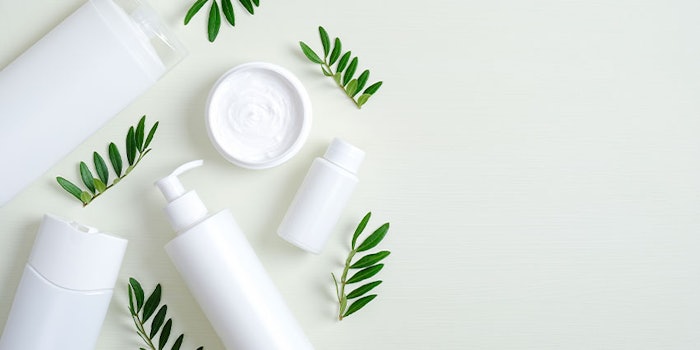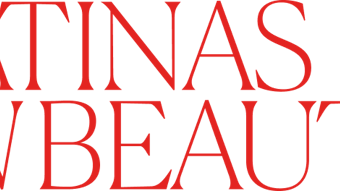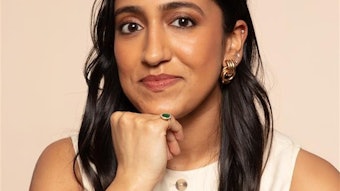
The Natural and Organic Health and Beauty Alliance (NOHBA) will be hosting its first industry summit March 3-4, 2020, at the Westin Hotel LAX. Alex Mackenzie, associate editor of Perfumer & Flavorist, was able to sit down with the president of NOHBA, Gay Timmons, before the event to find out more about the organization, the summit and the future of organic standards in the cosmetic industry.
Alex Mackenzie [AM]: What inspired you to develop NOHBA and create the NOHBA summit?
Gay Timmons [GT]: I have sold organic and natural ingredients into the cosmetic world for the last 20 years and I’ve worked on many of the standards, like the NSF 305 standard, the organic food standard, I’ve commented on the ECOCERT standard, which became the COSMOS standard, and I was one of the primary authors of the California Organic Products Act, which incorporated a minimum level of organic content required for making a front label claim to consumers.
There was a $1.7 million FTC lawsuit over a reaction someone had to a product that was inappropriately claiming organic.
What I saw was that the greater industry was serving the greater industry. They were not dealing with the unique challenges and questions around this emerging space of clean and green. Not the least of which is what do those words even mean? I kept getting disappointed complaints from the indie brands I worked with, when they attended regulatory summits and things like that, they were not getting the support or the information they needed to solve their problems.
So, we started NOHBA to provide resources and education to that sector. The conference is a natural outgrowth of that and the primary motivation for the conference is that there are a lot of individual brands making statements about what clean and green are to them. We want to get everybody on the same page.
[AM]: What is happening in the beauty industry that is driving the need for this event?
[GT]: Recently, a representative from New York issued a proposed regulation on the word “natural” for cosmetics. I spoke to their office and asked why they did this, and they said it was because of this big lawsuit that happened under the FTC. There was a $1.7 million FTC lawsuit over a reaction someone had to a product that was inappropriately claiming organic.
As a result, they came out with this regulation defining natural in a very short period of time. In my experience and in the experience of all the other people who are currently serving on the board at NOHBA who have all worked in this space for a long time, before you can start assigning meaning, you need stakeholder buy-in and you need credibility in the eyes of the consumer.
Most people don’t even know what the ppm is of the ingredients they're using, let alone the finished product.
For example, the organic regulation is a great model and it took a long time (40 years), but on the food side, on the processor side, when we finally went from a law in 1991 (the Organic Foods Act), to an actual regulation, it took 12 years to get that done. We know how to do it now, but you have to get a lot of people in the same room. Bottom line.
There needs to be a way for people to have input and react and bring the information and the arguments to a public space. I think the environmental issues that are so apparent add another layer of motivation.
[AM]: What steps is NOHBA taking to create a universally acknowledge standard for natural, organic, green, etc.?
[GT]: We don’t want to write a standard. We want to facilitate the conversation. There are many standards already out there. We are focused on how we can help those entities that have those standards make them clearer, help brands and developers be more informed so they can bring products to the market that are better for the public and the environment. We do not want to be a standard setting organization.
[AM]: What are the biggest challenges brands are facing to meet consumer needs?
[GT]: I think there are a couple of things that are putting pressure on the industry. One was when New York changed their laws and said you have to get rid of 1,4-dioxanes in your products down to one ppm within two years, which is really hard. Most of them aren’t at that level; right now, it has to be at 2 ppm. Most people don’t even know what the ppm is of the ingredients they're using, let alone the finished product.
Consumers want to be safe and we are not giving them the information they need to feel safe.
I think that the regulatory transition and now in California with the biomonitoring project—they are literally taking body fluids and monitoring the body burden of certain chemicals, so as the state sees the impact of these kinds of chemicals on humans—they are going to crack down more and more. As a state, we already have the Safer Products Act, the Safe Cosmetics Act, we have all these different things where we’re looking at the safety of the consumer and trying to figure out how to improve those exposures. I think that’s going to have a big impact on the cosmetic industry as a whole.
The other thing is the internet, social media. You’re seeing all of this media come out, validated or not, and it’s going to have an effect on the consumers. We should have learned our lesson with parabens. People freaked out about parabens. There was terrible data, but as the European Union has gone down that list and they have now banned four out of five parabens.
With transparency, they’re having a really hard time getting clear information from their suppliers, and, with innovation, they’re having a really hard time getting third party manufacturers to support their goals and be clear with them.
So, we need to pay attention and what I want to see, personally, is innovation. In my estimation, the cosmetic industry has been very complacent over the last 50 years and they need to wake up and start making new solutions to these very clearly identified concerns that are coming from worried consumers. Consumers want to be safe and we are not giving them the information they need to feel safe. A lot of that is going to have to come from innovation, both in new materials and in our communication.
I was just at a very small conference that was sort of a team-building effort and exposure event that Credo put on. I went to a lot of the seminars that they organized, I talked to everybody I could talk to there, and the same things kept coming up: transparency and innovation. With transparency, they’re having a really hard time getting clear information from their suppliers, and, with innovation, they’re having a really hard time getting third party manufacturers to support their goals and be clear with them.
Everybody who is involved, especially in the clean beauty space, is very excited.
There are classes that we’re going to have at the NOHBA seminar to lay out some of the groundwork of that. For example, what can you use in the fragrance world that meets your personal goals as a brand owner?
There are some really useful standards and clear definitions that brands need to understand to have a better-informed conversation with the formulators. The formulators need these tools as well. The formulators really need to understand how these ingredients are made so they can know how to talk with their potential customers and how to formulate for them. So that’s one of the needs we’re trying to meet.
[AM]: What has been the biggest challenge in bringing the NOHBA summit to life?
[GT]: We’re a teeny non-profit, it’s taken three years. We have a lot of enthusiasm. It’s very clear that we need this. Everybody who is involved, especially in the clean beauty space, is very excited. Not everybody can come, but I think a lot of it is just identifying how to get to people, because we don’t have tremendous reach.
I have to say the Westin has been fantastic; it’s pretty easy to put together a conference with a big hotel like that. It’s just getting all the word out, that’s the biggest challenge, and getting them to go ahead and sign up.
It all comes down to public, transparent conversations.
[AM]: What do you hope the NOHBA summit will achieve? What is your main goal for the summit?
[GT]: Launch a public discussion. If media is there and we start talking about this, all the various cosmetic publications help to spread the word, then we do it again, I think we can start to make some progress.
The primary goal of the first two hours of the NOBHA summit is to have this public conversation in a guided format where we can lay-out what the regulations are, what the difference between a regulation and a private standard is, what the different brand standards for clean, green, natural, non-toxic, etc. are and how we get this to a place where we have some shared language, some shared understanding and we can face consumers from a credible position.
When somebody says ISO 9235, I know that is a set of definitions that we can run with.
We have somebody talking about pigments, because that’s a very misunderstood category of ingredients; somebody talking about fragrance because, again, very misunderstood; somebody talking about sunscreen solutions, we’re going through a lot of that; and somebody who is going to talk about what green chemistry really means because there is an academic and internationally recognized definition of green chemistry: it’s not just something from a plant.
It all comes down to public, transparent conversations. We really want to have this conversation and we really want the media there to listen to us and help us make this happen again. We’re going to have to have this conversation a couple of times over the next few years to try and guide this section of the industry to a better place, because it is a subset of the industry.
[AM]: What do you hope attendees will get out of the experience?
[GT]: Tools to be able to innovate and to be able to hold their production partners accountable. The complaints they had were transparency and not being able to get what they wanted to scale from a lab. We need to get that word out and we’ve got some labs showing up so they can learn what these brands want from them.
When somebody says ISO 9235, I know that is a set of definitions that we can run with. If a brand can explain that to their customers, then, they have a tool and formulators need that same tool to deliver for their consumers, and we can make it a lot easier on formulators because we can start to look at things other than just essential oils.
[AM]: What do you see for the future of NOHBA and the summit?
[GT]: We’re hoping we can do this every year. We would love to have more members; I think the membership is fairly affordable. We do a webinar that’s really focused on giving members tools to use.
The next webinar we have is going to be done by a professor that teaches green chemistry at UC Berkley and he’s agreed to do a webinar that will be a very basic introduction to green chemistry. We try to do one webinar a month and we’re trying to continue that. Aside from the main focus of giving people new tools, one of the things that I’m really excited about is the networking.
I read something that said by 2025 clean beauty will be 20% of the market. I think it’s going to be more than that.
We’ve got a wide range of people who have signed up for this, from huge companies down to little teeny baby startups. For some of these large companies who are kind of stuck in their ways, I think it will be very interesting for them to see some of these more successful indie brands who have created a very real brand, are loved, are growing and may not want to sell to a big brand; they just want to have their company.
I think the networking is going to be spectacular and fun so I’m looking forward to that a lot.
[AM]: Do you foresee that smaller brand are going to continue to steamroll and start to really dominate these areas of the market?
[GT]: They are. As far as I can tell they are very much growing and, at some point in time, I read something that said by 2025 clean beauty will be 20% of the market. I think it’s going to be more than that.
I’ve done this for 20 years and we primarily sell certified organic ingredients. I come from an agricultural background and I look at things like the study they did at UC Davis that showed that there was a significant improvement in carbon sequestration from organic farming methods as opposed to others.
There is very real science that tells us that the methods people are using to do different things can improve things in a general sense.
The rates of carbon sequestration in the soils can be addressed if we use these methods. There is very real science that tells us that the methods people are using to do different things can improve things in a general sense. To now have very large companies calling and being interested in using organic ingredients tells me that they are paying attention to these indie brands
My kids are 23 and 25 and they are very concerned, they are very careful and their friends are careful, but they can’t afford a lot of it. Indie brands are extremely expensive products. We can make a lot of the steps saner and simpler and make it available to more people. That’s my personal goal. The need is there and the desire, so, we really need to get this stuff out there.
More information about NOHBA and membership registration can be found at nohba.org and summit information and event registration are available at nohba.org/conference.










